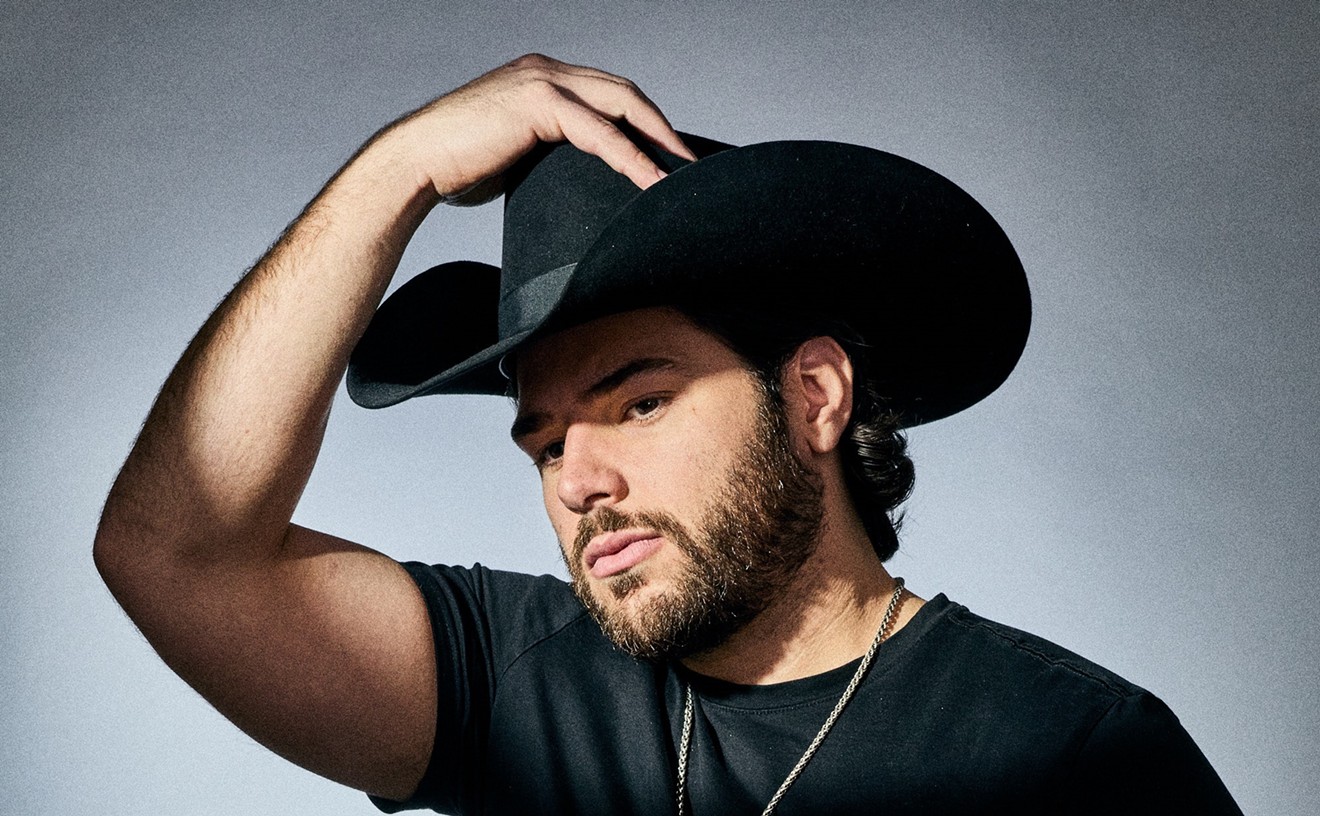The results, captured on a thick, wax acetate, must have bolstered the confidence of the young singer, for he returned to the studio (known at the time as the Memphis Recording Service) in January of the next year to record two more ballads: Joni James's "I'll Never Stand in Your Way," and Jimmy Wakely's country hit "It Wouldn't Be the Same Without You." Later that summer the studio's owner, Sam Phillips, paired the singer with a guitarist and bass player who had worked at Memphis Recording with various combos. After a bit of rehearsing, a bit of tinkering around, they stumbled on a style that combined the singer's eclectic tastes in music, which ranged from the smooth pop of Dean Martin to the hardscrabble country of honky-tonk hell raisers; from the black and white gospel of the South to the ragged blues that Phillips had been recording at his tiny studio and leasing to labels across the nation. The singles issued by the trio over the next year and a half on Phillips's Sun label were described in the press first as hillbilly bop, then rockabilly. What it was, though, was rock and roll.
In the winter of 1969, that same singer returned to a Memphis studio (Chips Moman's American Studios) for the first time since his last session at Sun in 1955. By then he was a superstar, a man who over the past decade had perfected the art of rock and roll, spent a couple of years in the army, developed a taste for all sorts of pills, recorded some fine sides in the early Sixties, made some of the worst films in cinema history, and some of the worst music in the genre he helped create. Flush with the success of a 1968 television special that showed the world that he had regained his focus, his confidence, his brilliance, the singer made some of the greatest music of his career, music that rivaled his first recordings. Which is to say, work that rivaled the greatest music of the century.
These anecdotal fragments make up just part of the long tale that is the life of Elvis Presley. If the story has been told to death, it's because it remains fascinating nearly a half-century after the first chapters were written at Sun Records, and more than two decades after its awful conclusion in 1977, when Elvis overdosed in the bathroom of his Memphis mansion, Graceland. The details have been chronicled in countless essays and books, both brilliantly (Dave Marsh's Elvis, Greil Marcus's Mystery Train, and Peter Guralnick's Last Train to Memphis), and abysmally (most notably Albert Goldman's execrable Elvis and Elvis: What Happened?, a bitter tell-all written by two ousted members of Elvis's Memphis Mafia). The music has been packaged and repackaged by RCA, the label to which Elvis signed after leaving Sun in 1955. It's been hastily assembled on scattershot longplayers, spread out over innumerable singles, with the rarest of rarities doled out over the years on otherwise useless compilations designed to make fans buy the same stuff again and again, just to hear that one piece of previously unreleased history. And we buy them, because, again, the story is fascinating, filled with drama and pathos, myth and melancholia, unfathomable success, enviable triumph, and bottomless tragedy.
RCA (now owned by BMG) did pretty well at times: The 1985 box set A Golden Celebration offers a treasure-trove of Fifties-vintage TV appearances and valuable concert material; Reconsider Baby, released the same year, rounded up some of Presley's finest blues sides; and the Essential Elvis series initiated in 1988 has unearthed some marvelous alternate takes. More typical, though, were slapdash affairs such as Our Memories of Elvis, Return of the Rocker, Always on My Mind, plus too many others to list, none of which did a damn thing to honor or shine new light on the man's legacy.
Things got better after the dawn of the digital era in the late Eighties. There were decent, which is not to say perfect, collections of the early years (The Sun Sessions CD); the triumphant late-Sixties period (Elvis's NBC TV Special, The Memphis Record); and The Million Dollar Quartet, which captured an informal gospel-steeped jam session at Sun in 1956 featuring Elvis, Jerry Lee Lewis, and Carl Perkins. (Sun alumnus Johnny Cash, the fourth member of that quartet, was on hand only for the photo, hence the misnomer.)
Following the 1992 release of the box set The King of Rock n' Roll, however, BMG has finally gotten it right, thanks in no small part to Danish author, producer, and Elvis archivist Ernst Jorgensen. He's been presenting the massive body of Elvis's work in the manner it deserves: with definitive collections of Presley's gospel work (Amazing Grace: His Greatest Sacred Performances); his Sixties sides (From Nashville to Memphis); the severely underrated Seventies recordings (Walk a Mile in My Shoes); and the cream of Presley's soundtrack recordings from the Sixties (Command Performances: The Essential Sixties Masters II). More recently Jorgensen has been at the helm of Tiger Man and Memories, which pull together everything cut for the famed '68 TV broadcast, a spectacular assemblage of alternate takes from a pair of 1971 Memphis sessions cut at Stax (Rhythm and Country), and A Hundred Years from Now, which includes often brilliant alternate takes from the terrific 1971 albums Elvis Country and Love Letters from Elvis.
This year has produced another inevitable batch of Elvis reissues, including The Home Recordings, a collection of private sessions cut between 1955 and 1966 that captures Elvis at the piano, tackling everything from Bob Wills's "San Antonio Rose" to "When the Saints Go Marching In." The sound quality is predictably rough, but there are some lovely moments across the set, especially an aching version of "After Loving You" from 1966, which he would return to three years later in a proper studio setting. And it's nice to hear him having fun with the cornball likes of "Tumblin' Tumbleweeds," and digging deep into his gospel roots on "I Asked the Lord" and "Show Me Thy Ways, O Lord."
Still The Home Recordings is less a collection of music than a historic document, like comparing the home movies shot by Bogie and Bacall with the work they did under the cinematic direction of Howard Hawks. Certainly if you care at all about Elvis, you need to hear this music. In its own way it yields surprises not unlike those scattered throughout The Million Dollar Quartet. But how many times you return to it will depend on the degree of your fanaticism.
Sunrise and Suspicious Minds: The Memphis 1969 Anthology, though, are miraculous documents of Elvis's two greatest periods, and stand alongside The King of Rock n' Roll and Walk a Mile in My Shoes as the finest Presley collections to date. Most of the music on both sets has been previously released: the former on the shabbily remastered The Sun Sessions CD and the first disc of the sonically superior King box; the latter on The Memphis Record, a disastrously programmed hodgepodge of his 1969 sessions at American Studios, and the last two discs of the From Nashville to Memphis box.
These new reissues rectify the sins of their predecessors. In addition to debuting "It Wouldn't Be the Same Without You," the flip side of Elvis's second informal recording from 1954, and some terribly recorded live-'55 sides that would be great if you could actually hear them, Sunrise presents the bulk of Presley's Sun recordings in glorious fidelity. Scotty Moore's guitar has never cut so deeply, Bill Black's bass has never rumbled with such sonic authority, and Presley's vocals soar with a clarity that makes this music as vital and moving as it was more than four decades ago. The vibrancy of "Blue Moon of Kentucky," the pile-driving rhythms of "Good Rockin' Tonight" and "Mystery Train," the spectral balladry of "Blue Moon" and "Harbor Lights," the commanding swagger of "Trying to Get to You" -- it all remains completely throttling both emotionally and physically, the finest rock and roll ever made.
But then, everyone knows that by now. The music collected on Suspicious Minds, however, is among the most overlooked and underappreciated by all but the most devoted of Presley acolytes, the ones who scoff at John Lennon's legendary comment that Elvis died when he joined the army. Recorded during fourteen sessions in January and February 1969, with Chips Moman behind the board and the American Studios house band at the apex of its power, Elvis produced his most diverse body of work. It's utterly contemporary, yet steeped in the traditions that always formed his vision: from sentimental pop to scalding blues, from pulsating Southern soul to gorgeous country and western. His command and presence is staggering.
The proof is spread across the 44 tracks that compose Suspicious Minds, especially the first twelve cuts on the first disc, which were originally released in '69 as From Elvis in Memphis, the King's greatest album and as masterful a longplayer as you'll find in the catalogues of Frank Sinatra, Bob Dylan, the Beatles, or the Rolling Stones. Amid the taut rhythm foundation of bassist Tommy Cogbill and drummer Gene Chrisman and the dazzling guitar work of Reggie Young, Elvis nails everything in his path. He turns Eddy Arnold's country standard "I'll Hold You in My Heart" into a smoldering blues exorcism, mutates Hank Snow's honky-tonker "I'm Movin' On" into a crushing soul stomp, and brings a ferocious, almost frightening intensity to the pounding "Power of My Love" and the tormented "Long Black Limousine." As a distillation of Elvis's myriad influences, From Elvis in Memphis and the accompanying singles (especially "Suspicious Minds" and "Stranger in My Own Home Town," both among his ten essential performances) rival, and just as often eclipse, anything from the legendary Sun sessions. After all those horrible films and all those horrid soundtracks, the '69 sessions prove Elvis could still tower over the landscape of popular music, redefining it as he mastered it.
And contrary to the babble of naysayers, Elvis didn't stop there. The Vegas shows from the early Seventies yielded some blistering rock and roll ("Polk Salad Annie") and autobiographical pop ("You Gave Me a Mountain," "Walk a Mile in My Shoes"). Similarly his studio work produced some glimmering, gamut-spanning gems: "It's Still Here," "I Washed My Hands in Muddy Water," "Fool," "Promised Land," "I Can Help," "Shake a Hand," "I Was Born About Ten Thousand Years Ago," "Burning Love," "I've Got a Thing About You, Baby," and "Hurt," to name a few. It only takes one listen to the Walk a Mile in My Shoes box to realize Presley made terrific, often brilliant, music right up to his death. It's music filled with Sunrise's sense of discovery and trailblazing, and with the celebratory reclamation of his vision and gift -- of his crown -- that imbues every track on Suspicious Minds.










